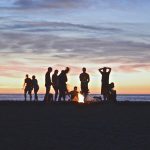Canada is in the midst of an epidemic of opioid use and abuse — involving both prescription and illicit forms of the potent narcotics — that shows no signs of abating and has led to an explosion of fatal overdoses. There were over 6,200 opioid-related deaths in Canada in 2020, which is about 17 deaths per day. That means more than two Canadians are dying as a result of drug toxicity every hour.
Canadians remain the second-highest per-capita consumers of opioids in the world, after Americans. But while U.S. use is beginning to decline, Canada’s numbers keep rising (International Narcotic Control Board, 2021).
Signs of an Overdose
- Slow, weak or no breathing
- Unresponsive to voice or pain (inability to stay awake even when shaken or shouted at)
- Pale face, Blue lips or nails
- Cold and clammy skin
- choking, gurgling or snoring sounds
- Dizziness and confusion
- Very small pupils
If you suspect someone has overdosed, call 9-1-1 immediately and be prepared to administer Naloxone if you have it.
What is Naloxone?
Naloxone (also known as Narcan®) is an opioid antidote and can reverse the potentially fatal effects of an overdose. Naloxone is safe for all ages. It only works if opioids (such as fentanyl, heroin and oxycodone) have been consumed. It will not work to reverse the effects of non-opioid drugs (such as cocaine, crystal meth, and MDMA). Using naloxone does not create dependence. It is safe and responsible to keep a naloxone kit on hand.
What’s in a Take-Home Naloxone Kit?
Naloxone kits are portable pouches containing an opioid antidote that can be administered by injection or through the nose to revive an unresponsive person who has overdosed. The kits include enough medicine to reverse opioid overdoses for 10-15 minutes, allowing time to access emergency services. If you are not sure what the person has taken, you should proceed to administer naloxone anyway if they are showing signs of an overdose. It is a safe medication that will not cause more harm, even if non-opioids have been used.
In Canada, two types of take-home kits are available and they come with detailed instructions.
- Naloxone nasal spray is sprayed directly into the nose, where it is absorbed. It starts to take effect in 2 to 3 minutes. Learn how to give naloxone spray (video).
- Naloxone injectable is injected into any muscle in the body, such as the arm or thigh. It starts to take effect in 3 to 5 minutes. Learn how to give a naloxone injection (video).
Take-home naloxone kits include two doses because overdose symptoms may return a few minutes after the first dose from the kit is given.
These kits include:
- Three 0.4mg doses of naloxone, in ampoules
- Three auto-retractable safety syringes: 3cc – 25g X 1″
- Three ampoule breakers
- Three alcohol prep pads
- Pair of non-latex gloves
- One-way rescue breathing barrier mask
- Steps to respond to an opioid overdose
How to Respond to an Opioid Overdose Using Your Naloxone Kit:
- Call 911. In the event of an opioid overdose, always contact emergency medical services immediately. You can then use your naloxone kit while you wait for medical help.
- Make sure the person is unresponsive. Shake, shout, clap or pinch. Before injecting Naloxone, make sure you’ve done everything you can to help the person regain consciousness
- Intramuscular Injection. The easiest and fastest way to administer naloxone is to inject the drug into a large muscle such as the upper arms, buttocks or thigh.
- Be patient and administer CPR. An injection of naloxone won’t elicit an immediate response. The antidote can often take upwards of 3 minutes to start working. While waiting, administer CPR by providing 1 breath every 5 seconds. Re-evaluate after 3-5 minutes and provide an additional dose if they are still unresponsive. If the person begins breathing on their own, or if you have to leave them on their own, put them in the recovery position.
- After-Injection. Victims are usually unaware that they have overdosed and could be confused. Keep calm and try to explain what has happened. The ambulance should arrive by this time and the authorities will perform a wellness check.
Where to Get a Naloxone Kit
You can pick up a Naloxone kit at most pharmacies. A prescription is not needed and nor do you need to know anyone who may be at risk of overdose. Simply ask the pharmacist and they will explain how to use the kit. Click your province to see where these kits are available.
- Alberta
- British Columbia
- Manitoba
- New Brunswick – Naloxone kits are available at pharmacies.
- Newfoundland and Labrador
- Northwest Territories
- Nova Scotia
- Nunavut
- Ontario
- Prince Edward Island
- Quebec
- Saskatchewan
- Yukon
It is responsible to carry one even in the case that a stranger needs help. The Good Samaritan Drug Overdose Act provides legal protection for individuals who seek emergency help during an overdose.




